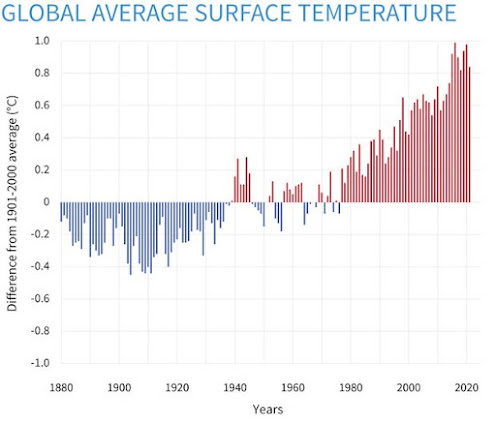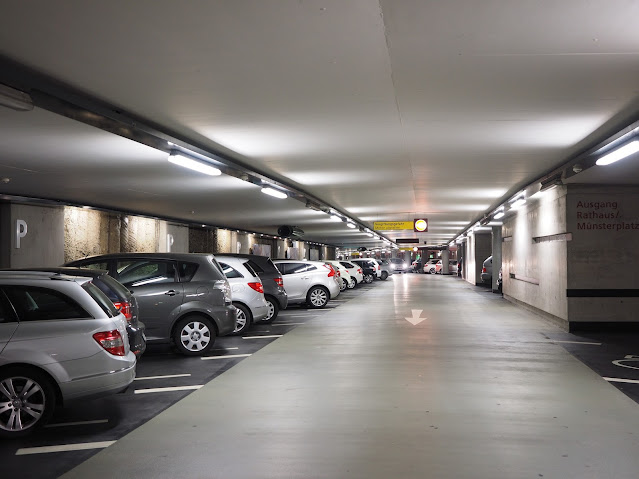 |
| Sustainability in transport sector (pixabay) |
“Climate
Change” and “Global Warming” are the things we have been hearing for a long. We
have always been casting the effect, impact, and consequences of climate change
behind our backs but now it starts wreaking havoc on the world with diverse
impacts.
U.N.
Secretary-General Antonio Gutteres said,
"Let's stop sleepwalking toward the
destruction of our planet by climate change, Today, it's Pakistan. Tomorrow, it
could be your country"
He
said it in a video message addressing the flooding situation in Pakistan that
is creating an alarm worldwide regarding carbon emissions and climate change.
Is Climate Change a Future Problem?
Climate
change is not a future problem now. Changes are happening in the globe’s
temperature due to human emissions, and heat-trapping creating a greenhouse
effect. Climate change driven by human ignorance is showing widespread effects
on our environment.
A
debate is occurring on the world’s leading platforms that who is responsible for
this fiasco. Someone is blaming the Russia-Ukraine war, others are saying that
it is intertwined with the global inequality pattern
Whoever
is responsible, we all know the root of climate change is always associated
with the emissions, making the glaciers melt and ice sheets shrink. Rivers and
lakes are flooding and breaking, and animals and plants are facing a great shift
in geographical ranges.
Effects of Climate Change
Effects
that scientists predicted from climate change long ago are coming to reality. Ice
loss in the sea, the rise in sea level continuously, and the longer and more intense
heat waves.
The
more alarming thing is, that the changes that scientists predicted are
happening sooner than they mentioned. Wildfires, droughts, floods, and extreme
rainfalls are happening a lot faster than the rate predicted. According to the Intergovernmental Panel on Climate Change
(IPCC), the modern world is facing climate change that humans never witnessed
before, and some of these changes are irreversible even over the next hundreds
or thousands of years.
Energy Is Everything
We
consume energy every day and much of it unknowingly. As per OECD (Organization
for Economic Corporation and Development), Energy is the biggest contributor to
global emissions with more than 60% impact. Energy is utilized to produce and
destroy and it is supposed to grow 78% by the end of 2050 from the level
recorded in 2005. If it will not be taken care of properly and immediately,
things will get out of our hands sooner or later.
 |
Figure
1:
Emissions by Sector (OECD) |
The
energy demand is mostly met by coal, natural gas, and fossil fuels. The
majority of this portion is also utilized by the transport sector. The current
share of transport in the global emission is more than 20%. This figure is set
to double by 2035 by 40% which is enough to turn the climate upside down alone.
This is because mobility is more and more evolving and we are depending on cars
a lot, resulting in the increasing demand for vehicles worldwide
The Changing Climate Is A Complex Issue
We
mostly refer to climate change as an increase in temperature. No doubt, it is
the most noticeable aspect as the global temperature rose to 1.8F from 1901 to
2020. But it is not the only effect.
What Climate change has done so far, let's have a look
The Planet’s temperature rose to 1C
- Sea Level faced a big change, having the level risen to 3.2mm/ year since 1993 which was previously 1.7mm/year throughout the twentieth century.
- The Glaciers are thinning. The size of well-studied 30 Glaciers are reduced to 60 feet since 1980.
- The amount of carbon dioxide has risen by 40% since the industrial revolution.
- Snow is melting earlier causing floods and river cutting.
 |
| Figure 2: Average Global Surface temperature (Climate.gov) |
The Sustainability Race
With
climate change in the limelight, every big organization and the leading
government is trying to fix its end by making contributions toward the green
world. A big race is in the transport sector as it is the center of many social
and economic development challenges. 64% of the world’s oil consumption, 27% of
overall world’s energy use, and 23% of global energy are related to carbon
emission
Sustainable Solutions for Transport Market to Retain The
Climate Change
Do you
know that CO2 emissions due to transport will increase up to 140% in 2050?
Climate change is one of the top priorities of the United Nations. UN is
encouraging more countries to join them in Climate Save Movement.
As
transport sector is growing rapidly in this modern era. It is increasing CO2
emissions and climate pollution.
Here
we will throw light on some of the sustainable solutions in the transport
market. By adopting these solutions, we can retain our climate health.
Companies Should Measure Green House Emission
The
first step for any company that wishes to reduce its environmental effect and
so help to reduce climate change is to measure its greenhouse gas emissions
(GHG).
To
that aim, numerous private organizations are carbon footprint certified and may
assist businesses in measuring their CO2 emissions.
Once
GHG emissions are determined, they must be examined to determine which of the
company's operations pollute the most. After this research, businesses can
start thinking about ways to minimize their emissions.
Climate-Resilient Transport
Climate
change threatens investment in transportation projects worth trillions of
dollars, which is why road resilience is a top priority on our agenda. In
Sub-Saharan Africa, where the asset value of the road network surpasses 30% of
the region's GDP, this is especially crucial.
According
to a paper released at COP22, better road maintenance is a key strategy for
increasing the region's road resilience.
A
number of strategies for increasing system resilience in road systems are
emerging, building on appropriate maintenance. These strategies include
strengthening particularly vulnerable segments, increasing system redundancy,
addressing standards, methods, and materials at the system level, and enhancing
the effectiveness of preparation for and response to extreme climate events.
Invest in Mass Transit System
A
fantastic method to reduce the carbon footprint of the transportation industry
is to invest in mass transit systems.
Additional
advantages include less traffic, safer roads, and more effective links to jobs
and services, among others. Africa, which now has some of the greatest rates of
urbanization in the world, is facing a serious problem in this regard.
Multi-Modal Transport System
More
effective and fuller vehicles in particular can result in reduced costs and a
smaller carbon footprint than less efficient freight operations.
Additionally,
it's critical to ensure that various modes of transportation complement one
another and provide seamless transfers of both people and products across
various modes of transportation in order to maximize the benefits of
transportation investments.
Future of Sustainable Transport
Along
with conventional bikes, skateboards, and skates during the past few years,
various innovative forms of transportation have also emerged.
Electric
scooters, hoverboards, Segway, and electric cycles are a few of these instances
of sustainable transportation; in other words, anything that resembles a
personal mobility device (PMV). Most of the time, these transportation options
are still more environmentally friendly.
Electric Bikes: Medium-distance trips are increasingly being
replaced by electric bikes instead of cars, cutting expenses and CO2 emissions
by 100 percent. However, as it has so far only been made of lithium ions, research
into improving its battery life continues.
In
actuality, this substance makes recycling more difficult and reduces battery
life. Alternatives based on sodium, fluoride, or zinc-air ions are beginning to
emerge.
Hydrogen Cars: Cities are promoting hydrogen vehicles as a new
form of transportation, particularly for buses. They must have fuel batteries
that enable hydrogen to interact with oxygen to produce energy.
Thus,
the only substance the car emits is water. However, the type of energy utilized
to produce the chemical reaction has a major impact on how much energy hydrogen
vehicles use (fossil fuels or renewables).
Ride Sharing Is A Game Changer
Buying
efficient cars and moving towards lower and lower power consumption can reduce
carbon emissions but is this enough? It is not, because with the innovations
the demand will be more. New transport trends can be an answer to all these
questions.
Ridesharing
is seeping into new trends of transport and gaining immense popularity and
appreciation among people who have sustainable visions.
You
can save a lot of money by ride-sharing, reduce the traffic on road, and save
yourself from the headache of maintenance and parking. The driver’s vehicle
costs are settled and the passenger can save a lot of money by contributing to
the environment side by side.
Do you know that 63% of the
cars on the roads contain only one person; the driver? Can you think of a
better way to save the environment in short term other than ride-sharing?
 |
| Car Parking (pixabay) |
Conclusion:
We
cannot sustain without transport. It is a crucial driver in social and economic
development. The infrastructure of transport helps in connecting people to
jobs, health, education, cultures, and each other. Global trade is dependent on
Transport. Roads can help you save someone’s life by carrying him to the
hospital on time.
At the
same time, it produces emissions that can wreak havoc on the world. Each year
185,000 deaths are directly related to vehicle pollution
Bibliography
IISD. (2021). The Road to Sustainable Transport.
Retrieved from IISD: https://www.iisd.org/articles/deep-dive/road-sustainable-transport
OECD. (n.d.). COP21: Climate change in figures.
Retrieved from OECD.org:
https://www.oecd.org/environment/cop21-climate-change-in-figures.htm
The World Bank. (2022). Social Dimensions of
Climate Change. Retrieved from worldbank.org:
https://www.worldbank.org/en/topic/social-dimensions-of-climate-change



0 Comments